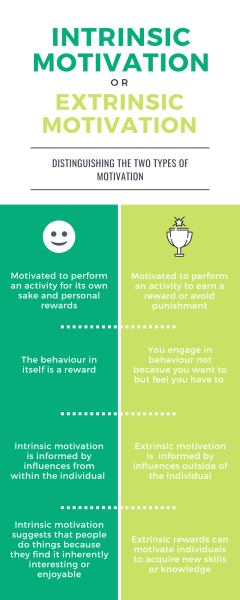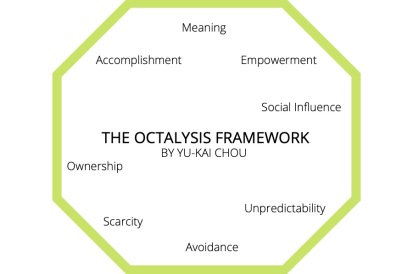It’s 5pm on a Friday night. Your day started with an absurdly long to do list – reply to work emails, finish off weekly tasks, get back to that person about that thing, take part in an outrageous amount of Zoom meetings. It’s 5pm, and you’ve just ticked the last task off that absurdly long to do list. Laptop is closed. You know what that means. TGIF! You get out a wine glass and you can feel that weekend feeling start to creep in. But what’s that? Your Apple Watch just dinged. It’s telling you that your activity rings aren’t closed yet. Apparently, a brisk, 12-minute walk should do the job. But it’s Friday night? It’s wine time! You try to ignore the notification, but you can’t. You’ll never relax until those rings are all closed. So, you put the wine glass down. Get your activewear on. 12-minute brisk walk? Let’s do this.
– 12 minutes later –
Walk is done. Rings are closed. Wine glass is full. Let the weekend begin.
The above scenario – one that I’m sure many Apple Watch owners feel to their core – is one made possible thanks to Gamification; the process of using “game mechanisms or elements in non-game contexts to increase an audience or user’s motivation and engagement” (Kuo & Chuang 2015, p. 16). Gamification requires substantial efforts to incorporate entertaining components within a non-game format, based on the concept that the engaging and enjoyable elements of video games should be able to make other, non-game applications more engaging and enjoyable (Kuo & Chuang 2015, p. 16). The above scenario inflicts a strong sense of motivation into users, with both the visual cue of the progress rings and the personalised message urging them into action (McGee 2019).

The purpose of gamification is to utilise “game-thinking” and “playful design” as a motivational tool to engage individuals through non-game contexts (Kuo & Chuang 2015, p. 17). Ryan and Deci in their Self Determination Theory distinguished the concept of motivation into two forms – intrinsic and extrinsic (Kuo & Chuang 2015, p. 17). Intrinsic motivation suggests that people do things because they find it inherently interesting or enjoyable; extrinsic motivation “refers to doing something because it leads to a separable outcome: receiving a reward, avoiding punishment or reducing pressure” (Kuo & Chuang 2015, p. 17). Essentially, games are typically considered as providing enjoyable, intrinsic motivation – gamification uses this joy emitting characteristic and applies it to non-game applications to evoke the same feelings (Kuo & Chuang 2015, p. 18). But sometimes feelings of joy or interest aren’t enough, and individuals will still lack intrinsic motivation for non-game applications (Kuo & Chuang 2015, p. 18). That’s where extrinsic motivation fits in with all their rewards and glory, because sometimes it’s necessary to use rewards or other devices to motivate (Kuo & Chuang 2015, p. 18).
Yu-Kai Chou, author, international speaker and all-round authority on Gamification created a framework – The Octalysis Framework – that defined what he believes to be the 8 Core Drivers of motivation in gamification. (Chou 2018). The 8 Core Drivers are: Epic Meaning and Calling, Development and Accomplishment, Empowerment of Creativity and Feedback, Ownership and Possession, Social influence and Relatedness, Scarcity and Impatience, Unpredictability and Curiosity and Loss and Avoidance (Chou 2018). Chou believed that these Core Drivers could be divided into Intrinsic Motivators – Right Core Drivers – and Extrinsic Motivators – Left Core Drivers (Chou 2018). This is important, because, according to Chou, most companies intend to design for motivation based on Extrinsic Motivators, however this is problematic, as studies have shown that once an extrinsic motivator is taken away, so is the motivation (Chou 2018). That’s why, he believes that it’s much better to design for intrinsic motivators, so that users will continue to engage in an activity (Chou 2018). I speak about this more in the video towards the end of this blog post.

I’ve found that it’s a combination of intrinsic and extrinsic motivation that works best for me – the intrinsic interest and enjoyment draws me in, but the extrinsic reward keeps me there. The Cognitive Evaluation Theory – a sub theory of the above-mentioned Self Determination Theory – identifies some of the factors that contribute to this: autonomy, competence and relatedness (Suh, Wagner & Liu 2016, p. 205). Autonomyrefers to the desire or willingness to do a task; competence refers to feelings of ‘effectance’ ( “the rewarding experience of imposing an effect on the environment” (Klimmt & Hartmann 2006, p. 137); and relatedness is experienced when an individual feels connected to others (Suh, Wagner & Liu 2016, p. 205). My initial, intrinsic motivation lies within autonomy, and the desire and willingness to do a task. The subsequent extrinsic motivation lies within competence, and the rewarding feelings that come from achieving something.
An app that I’ve recently found, Forest, uses gamification techniques that appeal to both my intrinsic and extrinsic motivator. I came across the Forest app during a very procrastination heavy study session – too much phone time resulted in not enough Uni work time which meant that tasks were taking longer than they needed to. My solution: google ‘productivity apps’ – this article by Medium came up, and that’s where I found Forest.
Essentially, the Forest app works like this:
When it’s time for you to focus, open the Forest app and plant a virtual seed, indicating that it is time to focus (Chou 2018). You can choose your focus time depending on the task at hand – 10 minutes to 2 hours (Chou 2018). If you stay focused on your task, your seed will grow into a tree. But if you leave the app, your seed will wither away (Chou 2018).

The app is based around the Pomodoro Technique, a time management strategy developed by Francesco Cirillo in the 1980’s (Allebach 2018). This strategy helps individuals to focus on a concentrated task for 25 minutes with the assistance of a time – when you get through 25 minutes you are rewarded with a break (Allebach 2018). The Pomodoro Technique is significant because the work and reward cycle of the technique keeps motivation fresh – it’s easier to get through a task that’s boring or tedious when you know that; 1. It will be over soon, and 2. There is a break on the other side (Allebach 2018).
The Forest App has gamified the Pomodoro Technique to both intrinsically and extrinsically motivate its users. The gamified mechanisms it has used to do this are:
Intrinsic Motivators
- Sign Posting; Whilst a seed is ‘planting’ the app gives users words of encouragement such as “What you plant now, you will harvest later” to encourage users to stay motivated
- Loss Aversion & Consequences; If the users leave the app whilst they are in the middle of planting a tree, the tree will die.
Extrinsic Motivators
- Fixed Reward Schedule; When users successfully plant a tree, they are rewarded with virtual coins
- Social Network & Competition; Users can invite friends to plant trees together – if one person leaves the app then all participating trees die
- Unlockable/Rare content; When users have planted enough trees to earn a certain amount of coins, they can unlock new trees
- Meaning/Purpose & Care Taking + Physical Rewards & Prizes; When users have planted enough trees, they can earn enough coins to plant a real tree – Forest works with a real tree planting organisation to plant real trees
- Badges & Achievements; Users can earn new badges and achievements when they hit certain tree planting milestones (Gamified UK)
Now, it’s easy to say, why not just use the timer on your phone? Why buy an app for $2.99? Well that’s easy. My timer won’t make me feel guilty for killing a virtual tree. My timer won’t give me words of encouragement. My timer won’t use my productivity to plant a real tree. The Forest app works for me because it uses gamification mechanisms to keep me off my phone and stay motivated. Even though I know the tree is fake, killing it still makes me feel guilty (I’ve done it once, I won’t do it again). Even though I’m still allowed to use the other apps on my phone, I won’t. It helps that, if I unlock my phone whilst a seed is planting, the app will tell me to put it down – I need that tough love!
I’ve put together a short video speaking about my experience with the Forest app, drawing on Yu-Kai Chou’s Octalysis Framework to explain how it has motivated me. You can watch the video below.
In an ideal world, I’d spend less time glued to my phone. I’d be more interested in doing my Uni work. And I’d spend more time focusing on things that are important. In an ideal world, I wouldn’t need apps like Forest to help me stay motivated. But it’s not an ideal world, it’s the real world. A real world where I am grateful for apps like Forest and their gamified mechanisms enhancing my motivation by making things that aren’t ordinarily fun, or interesting or enjoyable, fun and interesting and enjoyable. Gamification works because it helps us to see that we can do more, achieve more, and think more than we thought we could. It’s the equivalent of a parent telling their kid that eating carrots will make them see in the dark – it makes something not fun, fun by dressing it up in a way that makes it look appealing. Would you have gone for that 12-minute brisk walk if you watch didn’t tell you to?
References
Allebach, K 2018, ‘Best Productivity Apps for 2019 — Part 1: Pomodoro Focus Timers’, Medium, December 25th, accessed May 19th 2020 https://medium.com/@kalie.allebach/best-productivity-app-pomodoro-focus-habit-tracker-to-do-list-goal-setting-note-taking-ios-mac-4cd8f09daf7d
Cherry, K 2020, ‘Differences of Extrinsic and Intrinsic Motivation’, Very Well Mind, January 15th, accessed May 19th 2020 https://www.verywellmind.com/differences-between-extrinsic-and-intrinsic-motivation-2795384
Chou, Y 2018, ‘Octalysis – the complete Gamification framework’, Yu-Kai Chou, accessed May 20th 2020 https://yukaichou.com/gamification-examples/octalysis-complete-gamification-framework/
Chou, Y 2018, ‘The 10 Best Productivity Apps that use Gamification in 2019’, Yu-Kai Chou, accessed May 19th 2020 https://yukaichou.com/lifestyle-gamification/the-top-ten-gamified-productivity-apps/
Chou, Y 2018, ‘Who is Yu-Kai Chou’, Yu-Kai Chou, accessed May 19th 2020 https://yukaichou.com/gamification-expert/
Forest 2020, ‘Forest App’, Forest, accessed May 19th 2020 https://www.forestapp.cc
Gamified UK n.a, ’52 Gamification Mechanisms and Elements’, Gamified UK, accessed May 19th 2020 https://www.gamified.uk/user-types/gamification-mechanics-elements/
Klimmt, C & Hartmann, T 2006, ‘Effectance, Self-Efficacy, and the Motivation to Play Video Games’ in P Vorderer & J Bryant eds, Playing video games: Motives, responses, and consequences, Lawrence Erlbaum Associates Publishers, p. 133 – 145
Kuo, M & Chuang, T 2015, ‘How gamification motivates visits and engagement for online academic dissemination: An empirical study’, Computers in Human Behaviour, vol. 55, pg. 16 – 27
McGee, E 2019, ‘7 surprising examples of gamification most people overlook’, Yarno, July 15th, accessed May 18th 2020 https://www.yarno.com.au/blog/surprising-gamification-examples-overlooked/
Skeetrech Co ltd. 2020, Forest App (Version 4.17.2), Mobile App, accessed May 18th 2020
Suh, A, Wagner, C & Liu, L 2016, ‘Enhancing User Engagement through Gamification’, Journal of Computer Information Systems, vol. 58, no. 3, pg. 204 – 213









